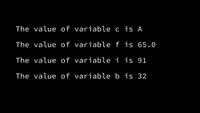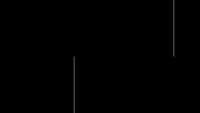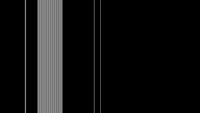Examples+
True/False
A Boolean variable has only two possible values: true or false. It is common to use Booleans with control statements to determine the flow of a program. In this example, when the boolean value "x" is true, vertical black lines are drawn and when the boolean value "x" is false, horizontal gray lines are drawn.
/**
* True/False.
*
* A Boolean variable has only two possible values: true or false.
* It is common to use Booleans with control statements to
* determine the flow of a program. In this example, when the
* boolean value "x" is true, vertical black lines are drawn and when
* the boolean value "x" is false, horizontal gray lines are drawn.
*/
boolean b = false;
size(640, 360);
background(0);
stroke(255);
int d = 20;
int middle = width/2;
for (int i = d; i <= width; i += d) {
if (i < middle) {
b = true;
} else {
b = false;
}
if (b == true) {
// Vertical line
line(i, d, i, height-d);
}
if (b == false) {
// Horizontal line
line(middle, i - middle + d, width-d, i - middle + d);
}
}This example is for Processing 4+. If you have a previous version, use the examples included with your software. If you see any errors or have suggestions, please let us know.




